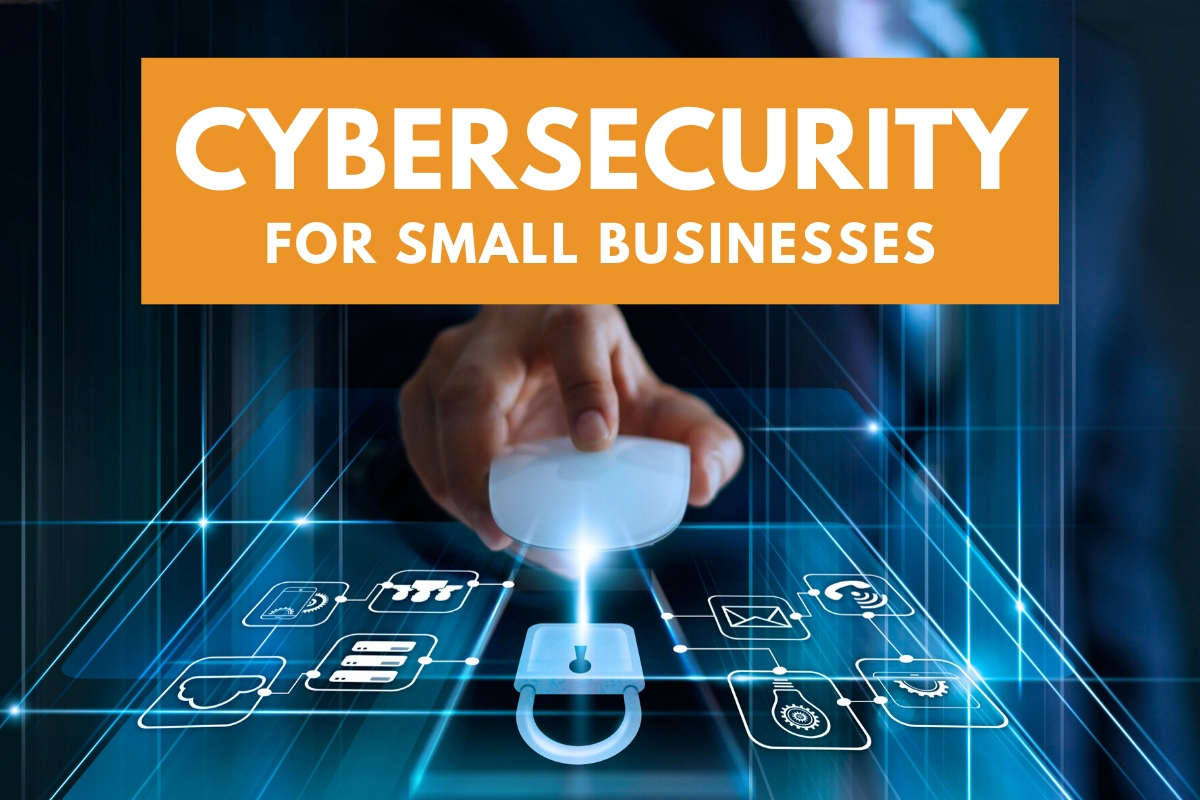As a small business owner, it’s easy to think that only large corporations are targeted by hackers. However, the reality is quite different—small businesses are often seen as low-hanging fruit because they typically don’t invest as much in cybersecurity. This makes it essential to put strong defenses in place. In this article, we’ll outline practical steps your business can take to safeguard itself from cyber threats.
1. Employee Education
 The most common entry point for cybercriminals is through your employees, which is why educating your staff should be the first step in your cybersecurity strategy. Even with the most advanced security measures in place, one employee mistakenly clicking on a phishing email or downloading malware can undo all your efforts. Training your team on recognizing cyber threats, like phishing scams, is crucial for maintaining a secure business environment.
The most common entry point for cybercriminals is through your employees, which is why educating your staff should be the first step in your cybersecurity strategy. Even with the most advanced security measures in place, one employee mistakenly clicking on a phishing email or downloading malware can undo all your efforts. Training your team on recognizing cyber threats, like phishing scams, is crucial for maintaining a secure business environment.
Education should be ongoing, not a one-time event. New threats emerge regularly, and your staff must be equipped to identify them. Regular cybersecurity workshops or online training sessions are effective ways to keep everyone informed. When your employees know what to watch for, they’re less likely to fall victim to social engineering attacks, which are the most common tactics used by hackers. By making cybersecurity training a priority, you transform your workforce into a strong line of defense against attackers.
2. Strong Password Policies
Weak passwords are an open door for cybercriminals, and they remain one of the most common vulnerabilities in businesses today. A strong password policy is vital for ensuring that this isn’t an easy entry point for attackers. Encourage employees to use long, complex passwords made up of letters, numbers, and symbols. It’s also helpful to establish a rule requiring passwords to be updated every few months.
In addition to strong passwords, implementing multi-factor authentication (MFA) adds an extra layer of protection. MFA requires not only a password but also another piece of information, like a code sent to a smartphone or an authentication app, before access is granted. This makes it much harder for hackers to gain unauthorized access, even if they’ve managed to steal a password.
3. Secure Your Wi-Fi Network
A Wi-Fi network is a necessity for most businesses, but it’s also a potential vulnerability. Unsecured or poorly configured Wi-Fi can allow cybercriminals easy access to your internal systems. Begin by securing your network with strong encryption, such as WPA3. Using outdated or weaker encryption methods, like WEP, makes your network easier to crack and leaves your business exposed.
Additionally, avoid using the default passwords that come with routers and network devices. These are often well-known and easily exploitable by hackers. Changing your network’s settings to use a strong, unique password adds another layer of security. For added protection, create a separate guest network for customers and visitors, keeping your business systems and data isolated.
4. Update Software Regularly
Outdated software is a common target for cybercriminals because it often contains known vulnerabilities that haven’t been patched. Keeping all your software up to date is one of the easiest ways to protect your business. This includes not only operating systems but also any applications or tools you use, such as web browsers, antivirus software, and office software.
Enable automatic updates wherever possible to ensure you’re always running the latest versions. Periodically check for updates for any devices connected to your network, including routers, printers, and IoT devices. By staying on top of updates, you’re closing off potential entry points and reducing the likelihood of an attack exploiting known vulnerabilities.
5. Backup Your Data
 Data is the lifeblood of any business, and losing it can be devastating. Whether it’s through a ransomware attack, a hardware failure, or a natural disaster, the consequences of losing business-critical data are severe. That’s why it’s essential to regularly back up all important information. Ideally, backups should be stored in multiple locations, including both physical devices and the cloud, to provide redundancy.
Data is the lifeblood of any business, and losing it can be devastating. Whether it’s through a ransomware attack, a hardware failure, or a natural disaster, the consequences of losing business-critical data are severe. That’s why it’s essential to regularly back up all important information. Ideally, backups should be stored in multiple locations, including both physical devices and the cloud, to provide redundancy.
Having backups is only useful if they work when you need them. Regularly test your backups to make sure the data can be restored without issue. In the event of an attack or data loss, quick access to your backups ensures your business can resume operations with minimal disruption, avoiding costly downtime.
6. Install a Firewall and Antivirus Software
Firewalls and antivirus software are fundamental components of a solid cybersecurity strategy. A firewall acts as a barrier between your internal network and external threats, monitoring and controlling incoming and outgoing traffic. Ensure your firewall is properly configured and always kept up to date to avoid becoming an easy target for attackers looking for vulnerabilities.
In addition to a firewall, reliable antivirus and anti-malware software can help detect and remove malicious software before it causes significant damage. This software should be installed on all company devices, from desktops to mobile phones, to ensure comprehensive protection. By using these tools in combination, you’re significantly reducing the risk of unauthorized access to your systems.
7. Limit Access to Sensitive Information
Not all employees need access to every part of your business’s data and systems. Limiting access by implementing role-based access control (RBAC) ensures that employees can only access the information necessary for their job functions. This way, even if an employee’s account is compromised, the damage is contained to a smaller portion of your network.
In addition to limiting access, it’s important to monitor who has access to sensitive information. Conduct regular audits to review user permissions and ensure that only authorized individuals have access to critical systems. This approach not only protects your data but also helps you comply with privacy regulations, which are becoming more stringent worldwide.
8. Create a Cybersecurity Plan
Without a plan, responding to a cyber incident can be chaotic and inefficient. A comprehensive cybersecurity plan outlines how your business will protect data, detect threats, respond to incidents, and recover from attacks. The plan should include roles and responsibilities for your team members, so everyone knows what to do in the event of a breach.
Your plan should also cover external resources, like cybersecurity consultants or law enforcement, and detail how and when they should be contacted. Regularly reviewing and updating your plan is crucial as new threats emerge. Having a well-prepared, actionable plan can make all the difference in mitigating the impact of a cyberattack on your business.
Don’t Forget
Cybersecurity is not just for large corporations. Small businesses are increasingly becoming targets due to perceived weaknesses in their defenses. By taking proactive measures—starting with employee training and continuing through strong password policies, secure Wi-Fi networks, and comprehensive cybersecurity planning—you can significantly reduce your risk of being compromised. Staying vigilant and prepared will ensure that your business remains resilient in the face of growing cyber threats.





